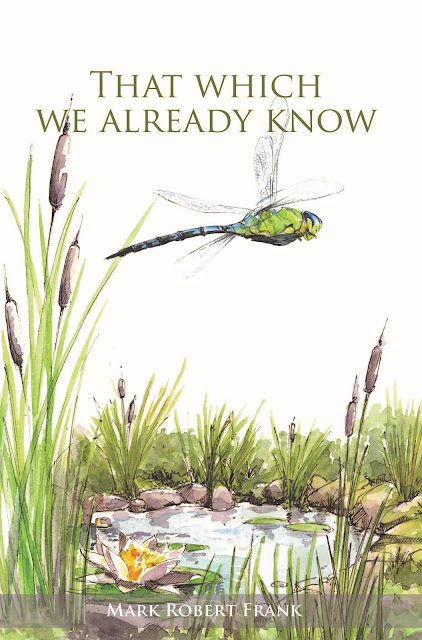Looking at Power Through an Integral Lens
In my previous post, I related the story of something of a power clash I was both privy to and part of. I was attending a religious service where a woman was singled out for not being spiritually powerful enough to take part, even though no men in attendance were questioned in this way. I ended up involving myself in this cultural (?) clash by later questioning the Tibetan Buddhist Lama who’d performed the service. You may read the whole story here.
Thinking of this occurrence in terms of a cultural clash is perhaps the most benign way to interpret what happened. A male practitioner of a very patriarchal religious system likely acted precisely as he’d been taught by his teachers from his home country. For my part, I behaved in precisely the way I was taught during my egalitarian Western upbringing. Hence, the clash.
 |
| Rorschach test inkblot #8 |
Perhaps we might also consider this conflict through
the lens of the developmental model theorized by Ken Wilber in, for
instance, Integral Spirituality (2007). While we all have access to higher and
more fleeting states of consciousness, so the theory goes, some
individuals have acquired greater familiarity with them, can reach them much
more readily, and can perhaps help others reach them more readily. Notwithstanding
our familiarity with higher states of consciousness, however, we
interpret these experiences according to whatever more stable stage of
development we’ve actually attained (p. 90). Thus, an interpersonal dynamic
that might prompt disagreement can occur when a teacher who is adept at
reaching higher states of consciousness is interacting with a student who,
though less skilled at attaining those higher states of consciousness, is
nonetheless operating from a higher foundational stage of development. Says
Wilber (2013):
[I]f your teacher is at this structural level—maybe mythic, maybe magic even—and you’re at rational or pluralistic or integral [level], then you’re going to run into trouble with every issue where these two values systems clash, and they clash on [just about] everything; they agree on very, very few things. And so, if you disagree with your teacher, it’s taken as if you…, it’s your ego disagreeing with the enlightened master, whereas in fact his or her response is just wrong, it’s just at a lower level of structural development. (Session Six, Track 4)
This model can also provide insight into how two students might behave very differently toward the teacher with whom they’re both working despite sharing very objectively similar experiences of him or her. If one student, for instance, is interpreting those experiences from a mythic stage of development and the other from a rational stage, then the subjective experiences of each student with regards to their teacher will be quite different. Might this help explain why, for instance, one of Joshu Sasaki’s students could seem unable to condemn the sexual abuse perpetrated by his ostensibly enlightened teacher while another finds it difficult to forgive?
Let me close with another example that I actually witnessed. A violent storm once blew through the neighborhood where our local Zen Center was located. It snapped a huge tree at the base just feet from the room where we all meditated. It wasn’t long before one of the senior students was claiming that the tree that fell was hundreds of years old, and the fractured stump contained the image of a buddha trapped within its growth rings!
Of course, the implication was clear. The universe foresaw that that auspicious place would one day become a place of practice led by a living buddha. The future was foretold in those very tree rings formed so very long ago. It seemed important to this person to contribute to the crafting of a mythic image for the teacher, something the teacher did nothing to dissuade. I, on the other hand, was coming from a more rational perspective. Those tree rings were merely a Rorschach test image upon which we might project meaning, or not as the case may be.
Sadly, this incident now seems to have foreshadowed an underlying dynamic that ultimately led to the destruction of that Zen community. What began as merely a fun-to-contemplate curiosity or an annoying attempt to curry favor with the teacher, depending upon your point of view, would later become a full-blown rift between those who were beginning to question some of the teacher’s erratic words and behavior and those who were inclined to think of him as a “living buddha” who could do no wrong.
I wonder if we might benefit from examining our current political climate through this Integral lens. More to come!
Parts of this post were previously published on this blog in Power—A
Postscript on August 29, 2013.
.jpg)
Power, Practice, and Peace logo
This post is in the Power, Practice, and Peace series.
Find a running list of all posts in this series by clicking here.
Images
The eighth blot
of the Rorschach inkblot test via:
https://commons.wikimedia.org/wiki/File:Rorschach_blot_08.jpg
References
Wilber, K.
(2007). Integral spirituality – A startling new role for religion in the Modern
and Postmodern world. Integral Books, an imprint of Shambhala Publications,
Inc.
Wilber, K.
(2013). The future of spirituality: Session six – the future of spirituality
(transcribed from lecture). Sounds True.
Copyright 2013 and 2025
by Mark Robert Frank



Comments
Post a Comment